A Flood Prevention Design for Guangzhou Metro Stations Under Extreme Rainfall Based on the SCS-CN Model
Abstract
1. Introduction
2. Analysis of the Flood Prevention Status of the Guangzhou Metro
2.1. Climate and Flood Risk of the Guangzhou Metro
2.2. Survey on the Flood Prevention Status of the Guangzhou Metro
2.2.1. Survey Plan
- Elevation Measurement at Entrances and Ventilation Shafts:
- Verification of Height Above Ground for Entrances and Ventilation Shafts:
- Environmental Survey of Entrance and Ventilation Shaft Facilities:
2.2.2. Analysis of Flood Prevention Issues in the Guangzhou Metro
- Flooding Due to Low Elevation or Steep Road Gradients:
- 2.
- Insufficient Structural Height:
- 3.
- Significant Impact from Municipal Engineering:
- 4.
- Flooding from Nearby Waterways:
3. Flood Prevention Design Methodology for Metro Systems
3.1. Selection of Defense Frequency
3.2. Flood Hazard Assessment
3.3. Calculation Method for Flood Prevention Design Water Level at Metro Stations
3.4. Flood Control Design for Xinsha Station on Guangzhou Metro Line 13 Based on the SCS-CN Model
3.4.1. Location and Flood Risk Assessment of Xinsha Station
3.4.2. Calculation of Surface Runoff at Xinsha Station
4. Discussion
4.1. Flood Damage Process at Guangzhou Metro Stations Under Extreme Rainfall Conditions
- (1)
- For a permeable surface it is calculated as follows:
- (2)
- For an impermeable surface it is calculated as follows:
4.2. Flood Control Design Optimization Strategy for the Guangzhou Metro
4.2.1. Flood Protection Design Elevation for Metro Stations
4.2.2. Integrated Optimization of Drainage Systems and Implementation of Intelligent Drainage Management
4.3. Advantages and Limitations of the SCS-CN Method in Metro Flood Control Design
5. Conclusions
- Field investigations revealed multiple deficiencies in flood protection at metro stations across Guangzhou, including low-lying terrain with water accumulation, insufficient elevation differences at entrances, inadequate drainage capacity, and risks of backflow from nearby rivers.
- Based on the analysis of the “7·20” Zhengzhou and “5·22” Guangzhou extreme rainfall events and using Xinsha station as a case study, runoff depth under high-return-period rainfall was calculated. To ensure adequate safety margins, an increase in the flood protection elevation is recommended.
- Under extreme rainfall, the flood progression at metro entrances typically follows the sequence: “extreme precipitation → surface water accumulation → intrusion → internal inundation”. Simulation results suggest that Xinsha station allows for a certain time window and conditions for safe evacuation, but raising the protection threshold remains necessary to cope with extreme events.
- It is recommended that metro station protection elevations be determined based on topography and rainfall conditions, with the addition of supplementary protective structures. Furthermore, an integrated “blue–green–gray” drainage system should be developed, and monitoring and early-warning capabilities strengthened to achieve intelligent, system-level flood management.
Author Contributions
Funding
Data Availability Statement
Conflicts of Interest
References
- Chen, X.; Zhang, H.; Chen, W.; Huang, G. Urbanization and Climate Change Impacts on Future Flood Risk in the Pearl River Delta under Shared Socioeconomic Pathways. Sci. Total. Environ. 2021, 762, 143144. [Google Scholar] [CrossRef] [PubMed]
- Lyu, H.-M.; Shen, S.-L.; Zhou, A.; Yang, J. Perspectives for Flood Risk Assessment and Management for Mega-City Metro System. Tunn. Undergr. Space Technol. 2019, 84, 31–44. [Google Scholar] [CrossRef]
- Aoki, Y. Anti-Inundation Measures for Underground Stations of Tokyo Metro. Procedia Eng. 2016, 165, 2–10. [Google Scholar] [CrossRef]
- Martello, M.V.; Whittle, A.J. Estimating Coastal Flood Damage Costs to Transit Infrastructure under Future Sea Level Rise. Commun. Earth Environ. 2023, 4, 137. [Google Scholar] [CrossRef]
- Qiu, H.; Qiu, R.; Luo, G.; Ayasrah, M.; Wang, Z. Study on the Mechanical Behavior of Fluid—Solid Coupling in Shallow Buried Tunnels under Different Biased Terrain. Symmetry 2022, 14, 1339. [Google Scholar] [CrossRef]
- Lyu, H.-M.; Shen, S.-L.; Yang, J.; Yin, Z.-Y. Inundation Analysis of Metro Systems with the Storm Water Management Model Incorporated into a Geographical Information System: A Case Study in Shanghai. Hydrol. Earth Syst. Sci. 2019, 23, 4293–4307. [Google Scholar] [CrossRef]
- Jiang, Y.; Gao, Y.; Yuan, Q.; Li, X.; Sun, K.; Sun, L. Simulation and Risk Assessment of Flood Disaster at the Entrance to a Rail Transit Station under Extreme Weather Conditions—A Case Study of Wanqingsha Station of Guangzhou Line 18. Water 2024, 16, 2024. [Google Scholar] [CrossRef]
- Quan, R.; Zhang, L.; Liu, M.; Lu, M.; Wang, J.; Niu, H. Risk Assessment of Rainstorm Waterlogging on Subway in Central Urban Area of Shanghai, China Based on Scenario Simulation. In Proceedings of the 2011 19th International Conference on Geoinformatics, Shanghai, China, 24–26 June 2011; pp. 1–6. [Google Scholar] [CrossRef]
- Xie, Q.; Luo, W.; Ouyang, Y.; Zhou, P.; Li, X. Study on Flood Protection Water Level and Early Warning for Huangpu Road Station of Wuhan Metro. Mod. Urban Rail Transit 2020, 71–75. (In Chinese) [Google Scholar] [CrossRef]
- Yin, F.; Li, X.Y. Flood Prevention Design for Rail Transit Engineering During the Rainy Season. Eng. Constr. Des. 2022, 57–59. (In Chinese) [Google Scholar]
- Wang, T.; Hu, L.; Chen, Z.G. Causes and Solutions for the Submersion of Guangzhou Metro Caused by the “5·22” Rainstorm in 2020. Guangdong Meteorol. 2020, 42, 52–55. (In Chinese) [Google Scholar]
- GB 50157-2013; Code for Design of Metro (Including Clause Explanations). Standardization Administration of China (SAC): Beijing, China, 2013. (In Chinese)
- Tang, S.M.; Li, X. Study on Design Flood Level for Hefei Metro Line 5 Station. Chin. J. Undergr. Space Eng. 2018, 14, 881–886, 899. (In Chinese) [Google Scholar]
- Liu, Y.B.; Gebremeskel, S.; De Smedt, F.; Hoffmann, L.; Pfister, L. A Diffusive Transport Approach for Flow Routing in GIS-Based Flood Modeling. J. Hydrol. 2003, 283, 91–106. [Google Scholar] [CrossRef]
- Elkhrachy, I. Flash Flood Hazard Mapping Using Satellite Images and GIS Tools: A Case Study of Najran City, Kingdom of Saudi Arabia (KSA). Egypt. J. Remote Sens. Space Sci. 2015, 18, 261–278. [Google Scholar] [CrossRef]
- Ni, J.D. Discussion on Flood Prevention Planning and Design for Metro Systems. Mod. Urban Rail Transit 2022, 77–80. (In Chinese) [Google Scholar]
- Ma, L.J.; Wang, C.T.; Wang, W.J.; Zhang, L.L.; Huang, H.P.; Zhang, S.T. Regional Runoff Characteristics in Zhengzhou City Based on SCS-CN Model. Bull. Soil Water Conserv. 2022, 42, 203–209, 381. (In Chinese) [Google Scholar]
- Ren, B.Z. Study on Design Storm and Runoff Calculation Model in Urban Areas. Ph.D. Thesis, Chongqing University, Chongqing, China, 2004. (In Chinese). [Google Scholar]
- Xu, J.; Zhao, Y.; Zhong, K.; Liu, X. Runoff simulation of main urban area in Guangzhou city based on the improved linear spectral mixture analysis and SCS-CN models. Trop. Geogr. 2016, 36, 969–975. [Google Scholar]
- Ponce, V.M.; Hawkins, R.H. Runoff Curve Number: Has It Reached Maturity? J. Hydrol. Eng. 1996, 1, 11–19. [Google Scholar] [CrossRef]
- Bhuyan, S.J.; Mankin, K.R.; Koelliker, J.K. Watershed–Scale AMC Selection for Hydrologic Modeling. Trans. ASAE 2003, 46, 303. [Google Scholar] [CrossRef]
- Zhang, Y.X.; Mu, X.M.; Wang, F. Calibration of Parameter λ in the Runoff Curve Number Model (SCS-CN) in Loess Hilly Region. Agric. Res. Arid Areas 2008, 124–128. (In Chinese) [Google Scholar]
- He, Y.P.; Chen, Y.; Xiao, T.G. Mesoscale Characteristics Analysis of the “5·22” Extreme Rainstorm Process Under Northwest Airflow Control in Guangzhou. J. Chengdu Univ. Inf. Technol. 2023, 38, 440–449. (In Chinese) [Google Scholar] [CrossRef]
- Pei, F.; Wu, C.; Liu, X.; Hu, Z.; Xia, Y.; Liu, L.A.; Xu, L. Detection and attribution of extreme precipitation changes from 1961 to 2012 in the Yangtze River Delta in China. Catena 2018, 169, 183–194. [Google Scholar] [CrossRef]
- Wu, J.; Li, J.; Zhu, Z.; Hsu, P.C. Factors determining the subseasonal prediction skill of summer extreme rainfall over southern China. Clim. Dyn. 2023, 60, 443–460. [Google Scholar] [CrossRef]
- GB/T 33668-2017; National Technical Committee 351 on Public Safety Fundamentals of Standardization Administration of China (SAC/TC 351). Metro Safety Evacuation Specification. China Standards Press: Beijing, China, 2017. (In Chinese)
- Chen, W.L.; Xia, J. Causes and Countermeasures of Urban Flooding in Guangzhou “5·22”. China Water Resour. 2020, 4–7. (In Chinese) [Google Scholar]
- Shen, R.Z. Mechanism of Flood Intrusion in Underground Spaces and Research on Flood Prevention Countermeasures. Ph.D. Thesis, Tianjin University, Tianjin, China, 2025. (In Chinese). [Google Scholar]
- Huo, K.; Qin, R.; Zhao, J.; Ma, X. Long-term tracking of urban structure and analysis of its impact on urban heat stress: A case study of Xi’an, China. Ecol. Indic. 2025, 174, 113418. [Google Scholar] [CrossRef]
- Ishigaki, T.; Toda, K.; Baba, Y.; Inoue, K.; Nakagawa, H. Experimental study on evacuation from underground space by using real size models. Proc. Hydraul. Eng. 2006, 50, 583–588. [Google Scholar] [CrossRef]
- Toda, K.; Oyagi, R.; Inoue, K.; Aihata, S. On the Inundation Process in the Underground Space in Urban Flooding. Kyoto Daigaku Bōsai Kenkyūjo Nenpō 2004, 47, 293–302. [Google Scholar]
- Zhu, K.Q. Research on Flood Control Design of Nanjing Metro Jiangxinzhou Station. Heilongjiang Sci. Technol. Commun. 2020, 43, 3. (In Chinese) [Google Scholar]
- Guangzhou Water Affairs Bureau. Comprehensive Planning for Urban Drainage (Rainwater) and Waterlogging Prevention in Guangzhou (2022–2035); Guangzhou Municipal Government: Guangzhou, China, 2024. [Google Scholar]
- Guangzhou Water Affairs Bureau. Special Planning for the “Smart Drainage” Project in Guangzhou (2019–2021); Guangzhou Municipal Government: Guangzhou, China, 2019. [Google Scholar]
- Hawkins, R.H. Curve Number Method: Time to Think Anew? J. Hydrol. Eng. 2014, 19, 1059. [Google Scholar] [CrossRef]
- Garen, D.C.; Moore, D.S. CURVE NUMBER HYDROLOGY IN WATER QUALITY MODELING: USES, ABUSES, AND FUTURE DIRECTIONS. J. Am. Water Resour. Assoc. 2005, 41, 377–388. [Google Scholar] [CrossRef]
- Beven, K.J. Rainfall-Runoff Modelling: The Primer, 2nd ed.; Wiley-Blackwell: Chichester, UK; Hoboken, NJ, USA, 2012. [Google Scholar]
- Bartlett, M.S.; Parolari, A.J.; McDonnell, J.J.; Porporato, A. Beyond the SCS-CN Method: A Theoretical Framework for Spatially Lumped Rainfall-runoff Response. Water Resour. Res. 2016, 52, 4608–4627. [Google Scholar] [CrossRef]
- Tedela, N.H.; McCutcheon, S.C.; Rasmussen, T.C.; Hawkins, R.H.; Swank, W.T.; Campbell, J.L.; Adams, M.B.; Jackson, C.R.; Tollner, E.W. Runoff Curve Numbers for 10 Small Forested Watersheds in the Mountains of the Eastern United States. J. Hydrol. Eng. 2012, 17, 1188–1198. [Google Scholar] [CrossRef]
- Hawkins, R.H. Distribution of Loss Rates Implicit in the SCS Runoff Equation. Hydrol. Water Resour. Ariz. Southwest 1982, 12, 47–52. [Google Scholar]
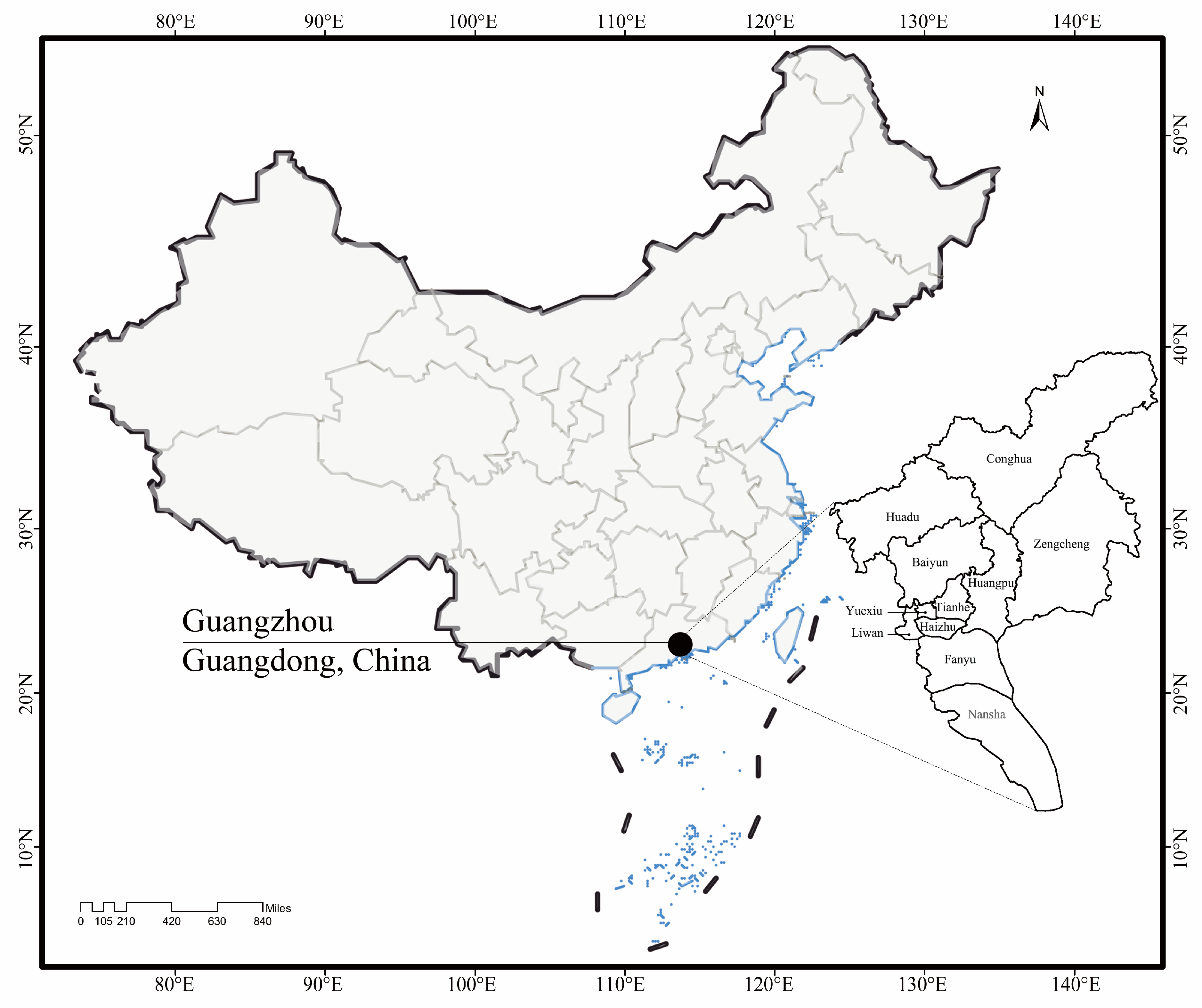


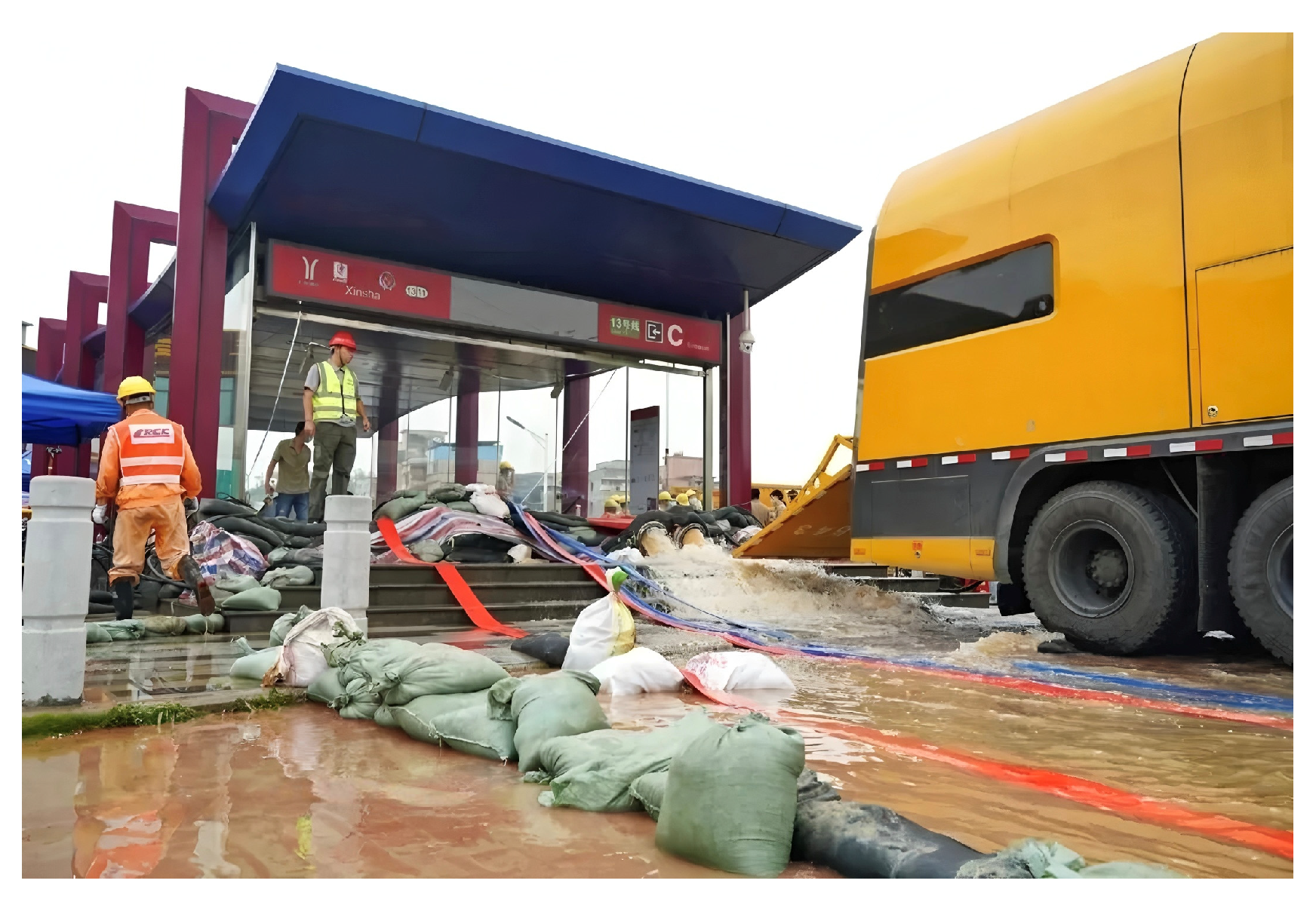
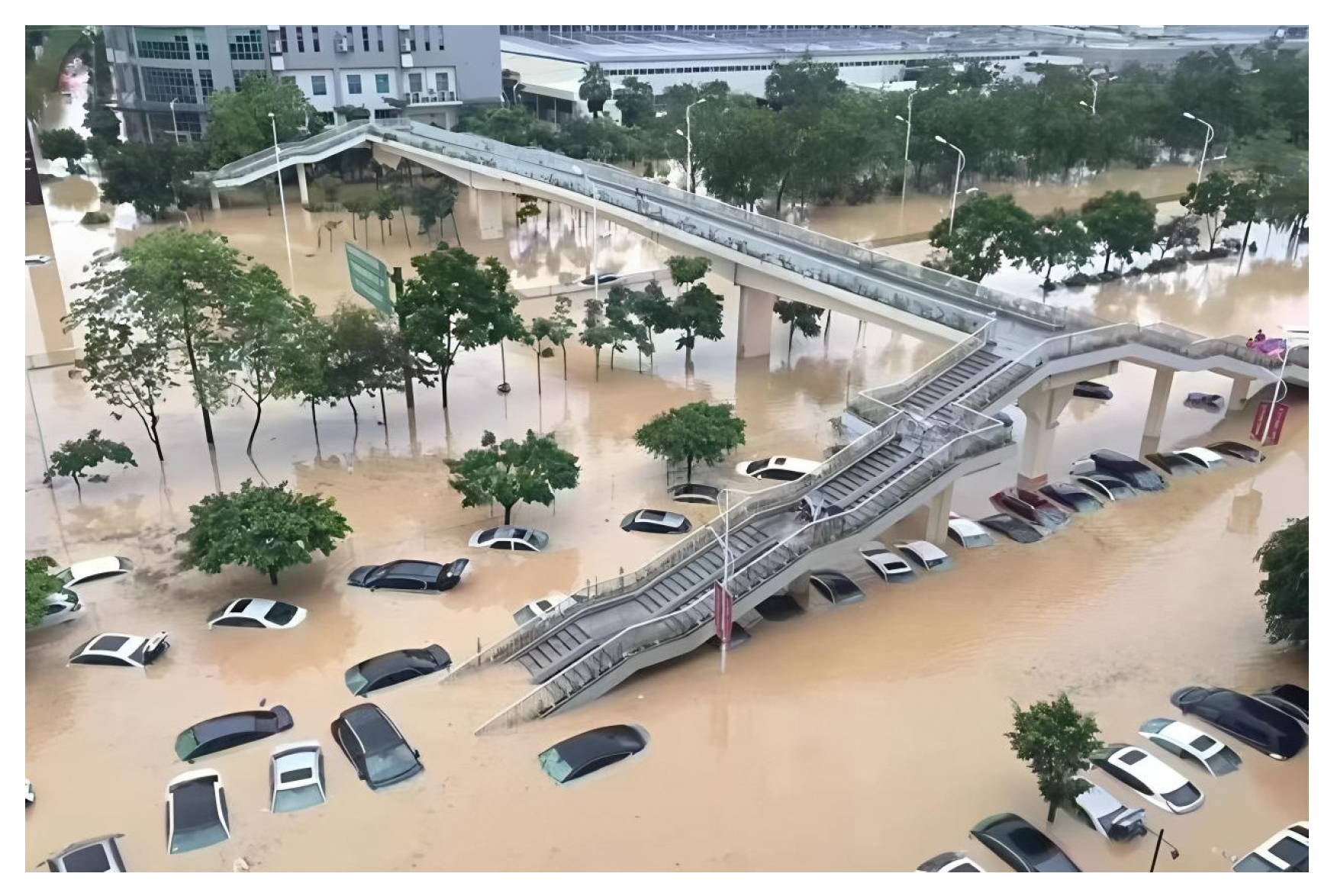
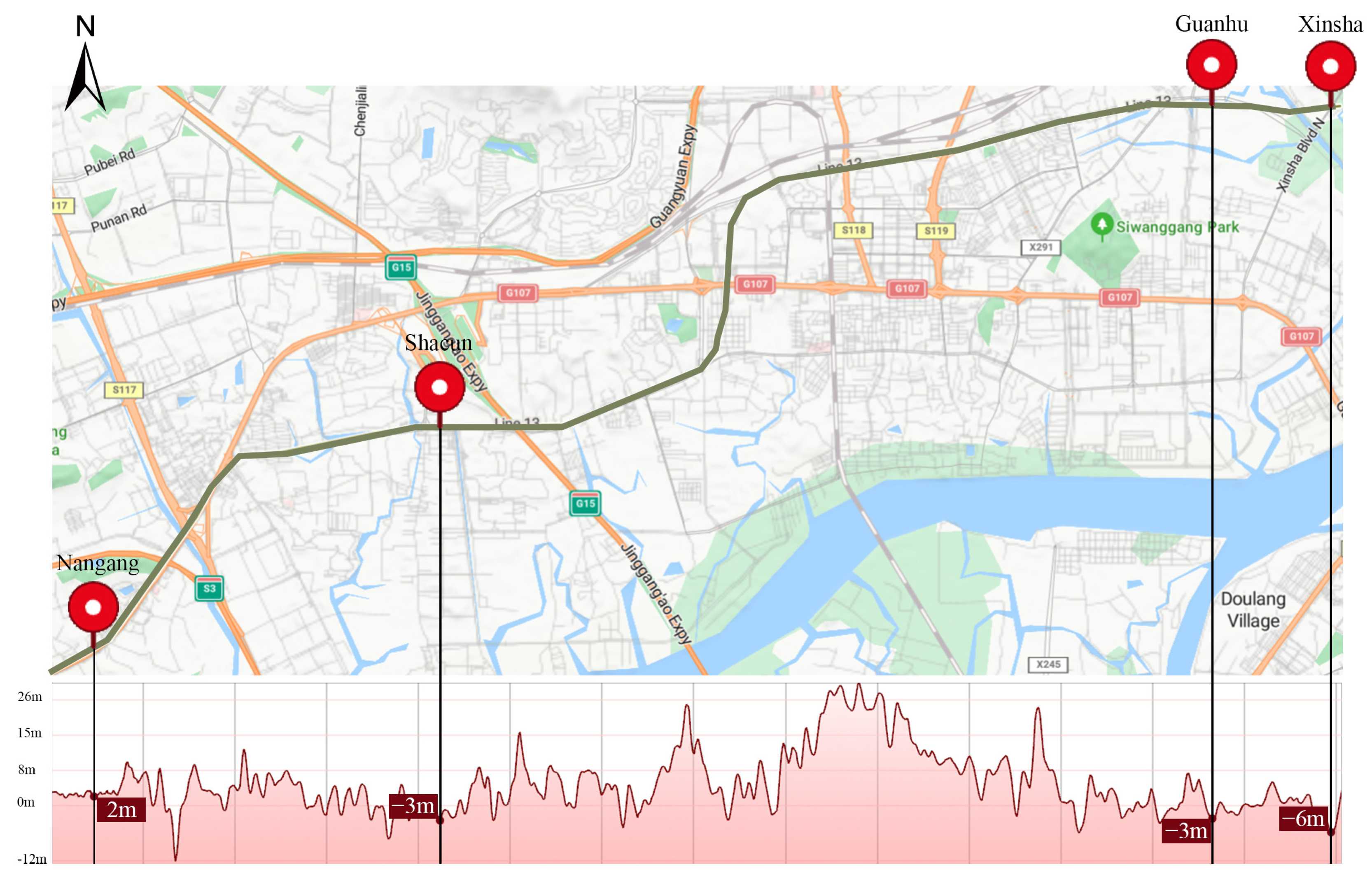
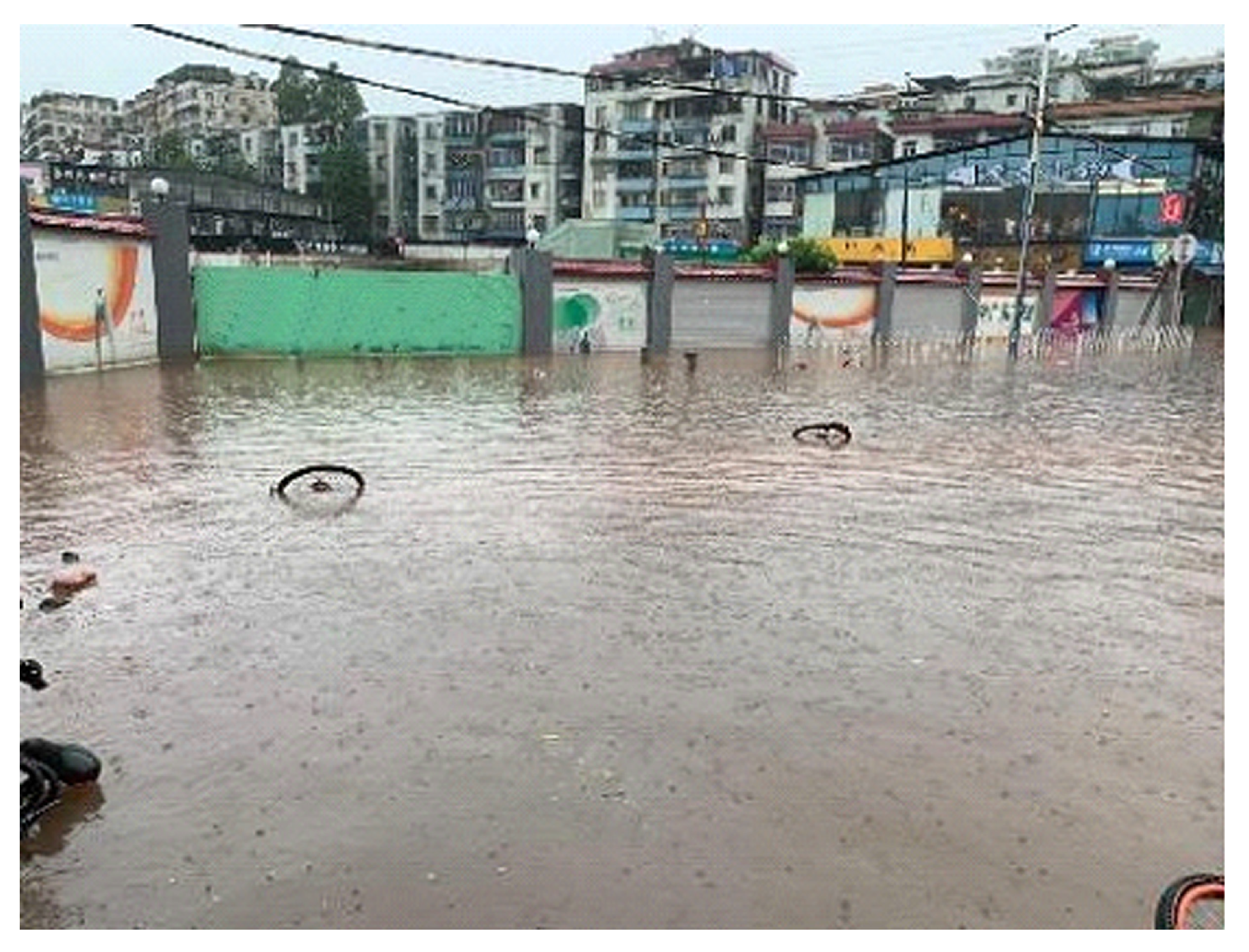

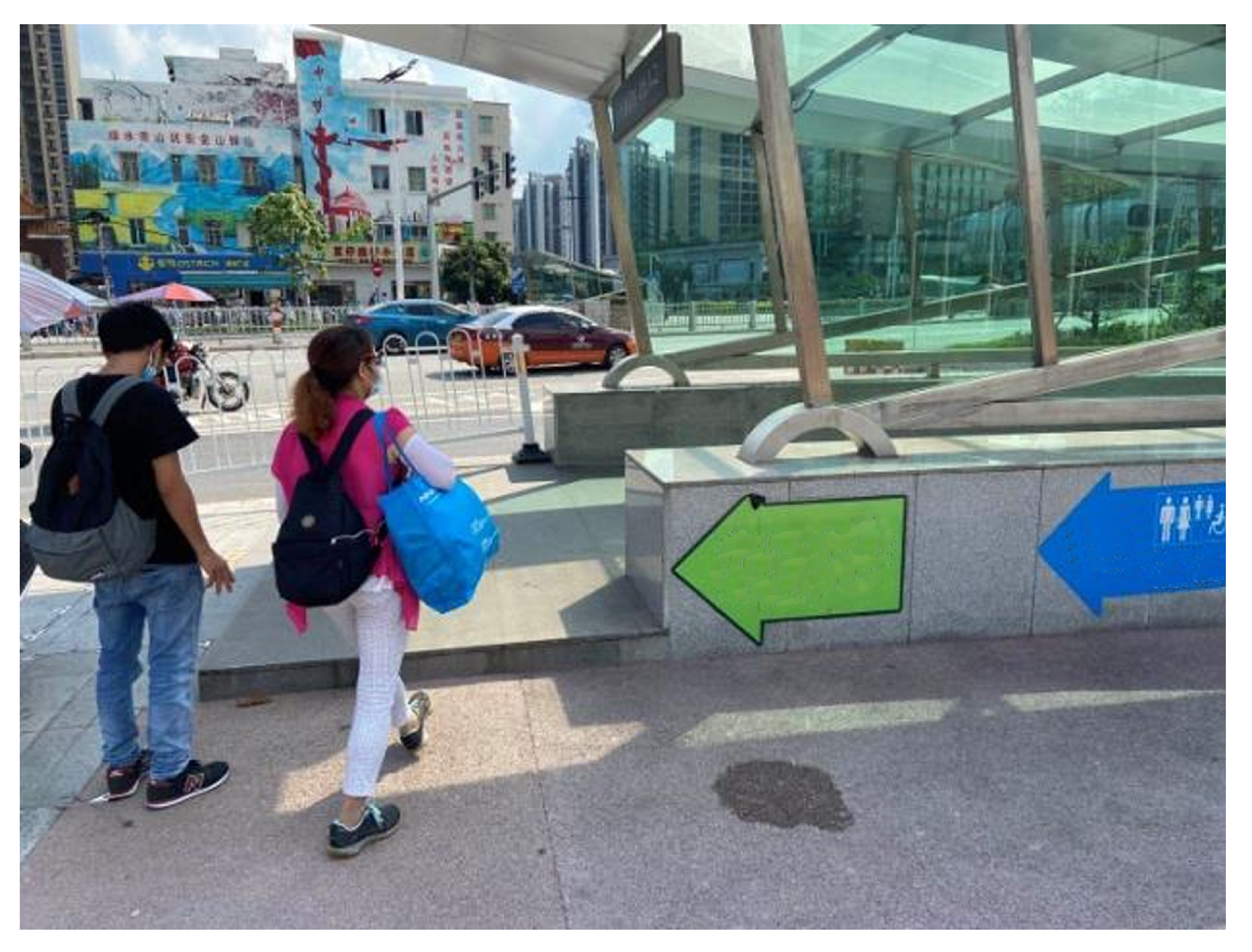
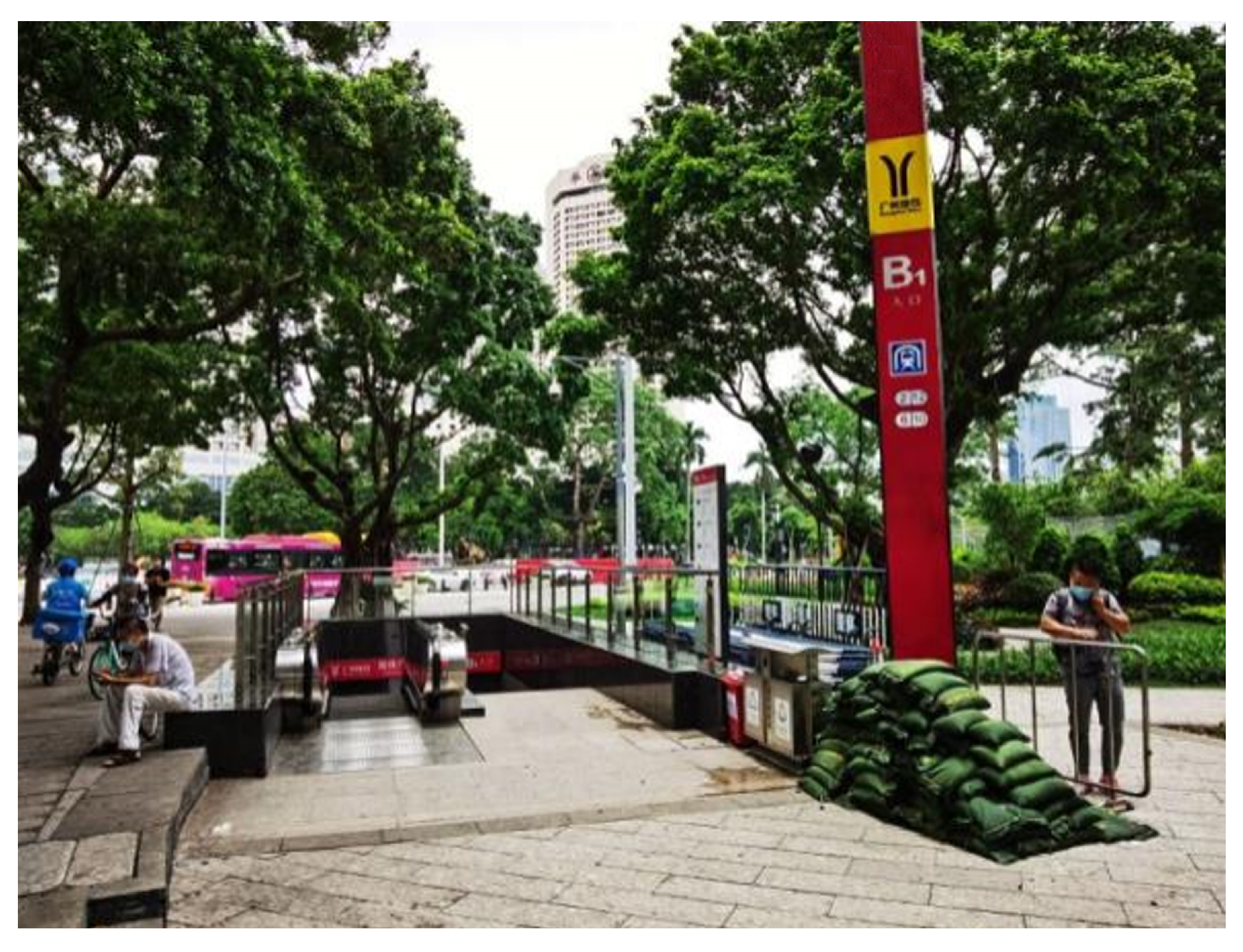
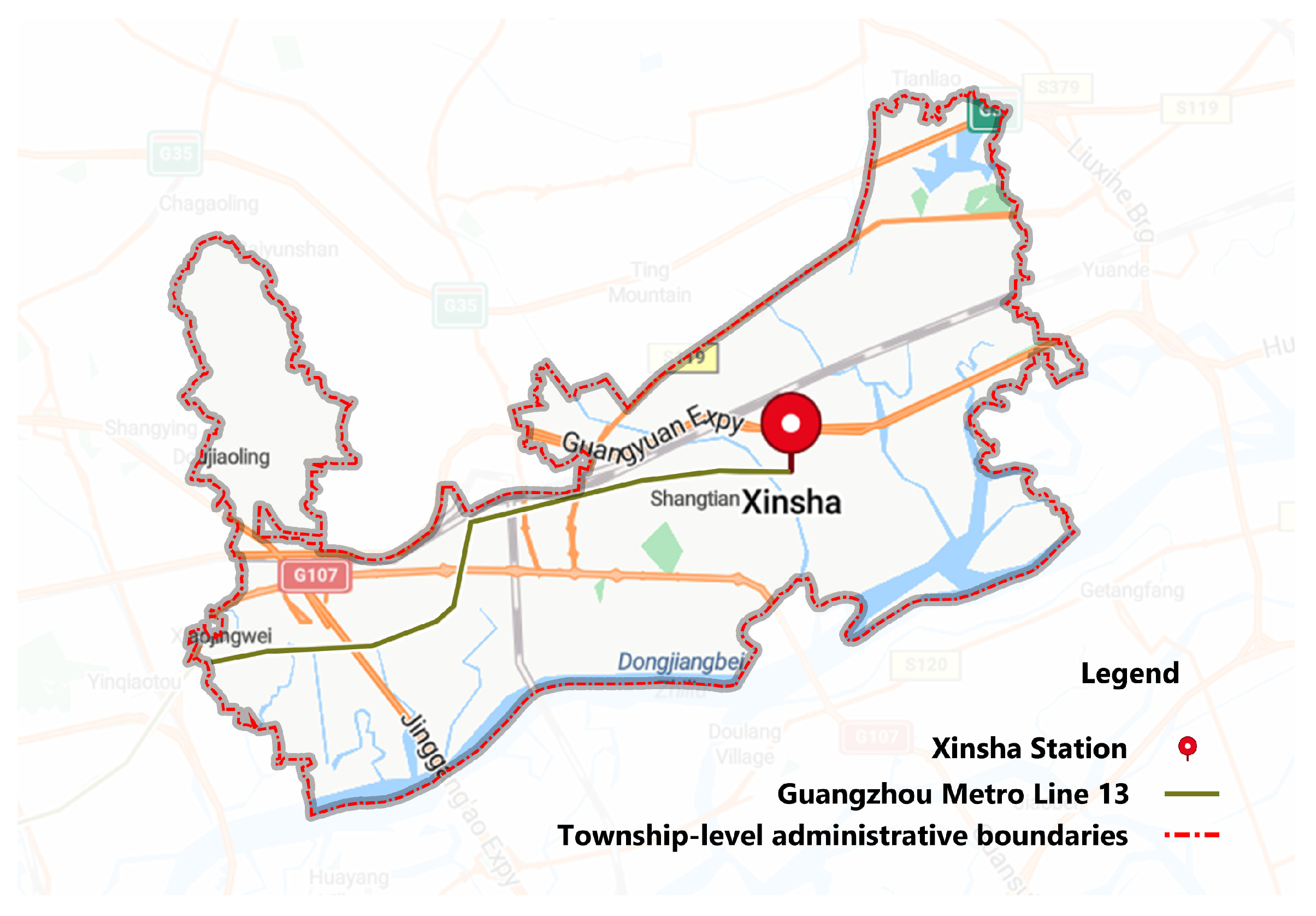
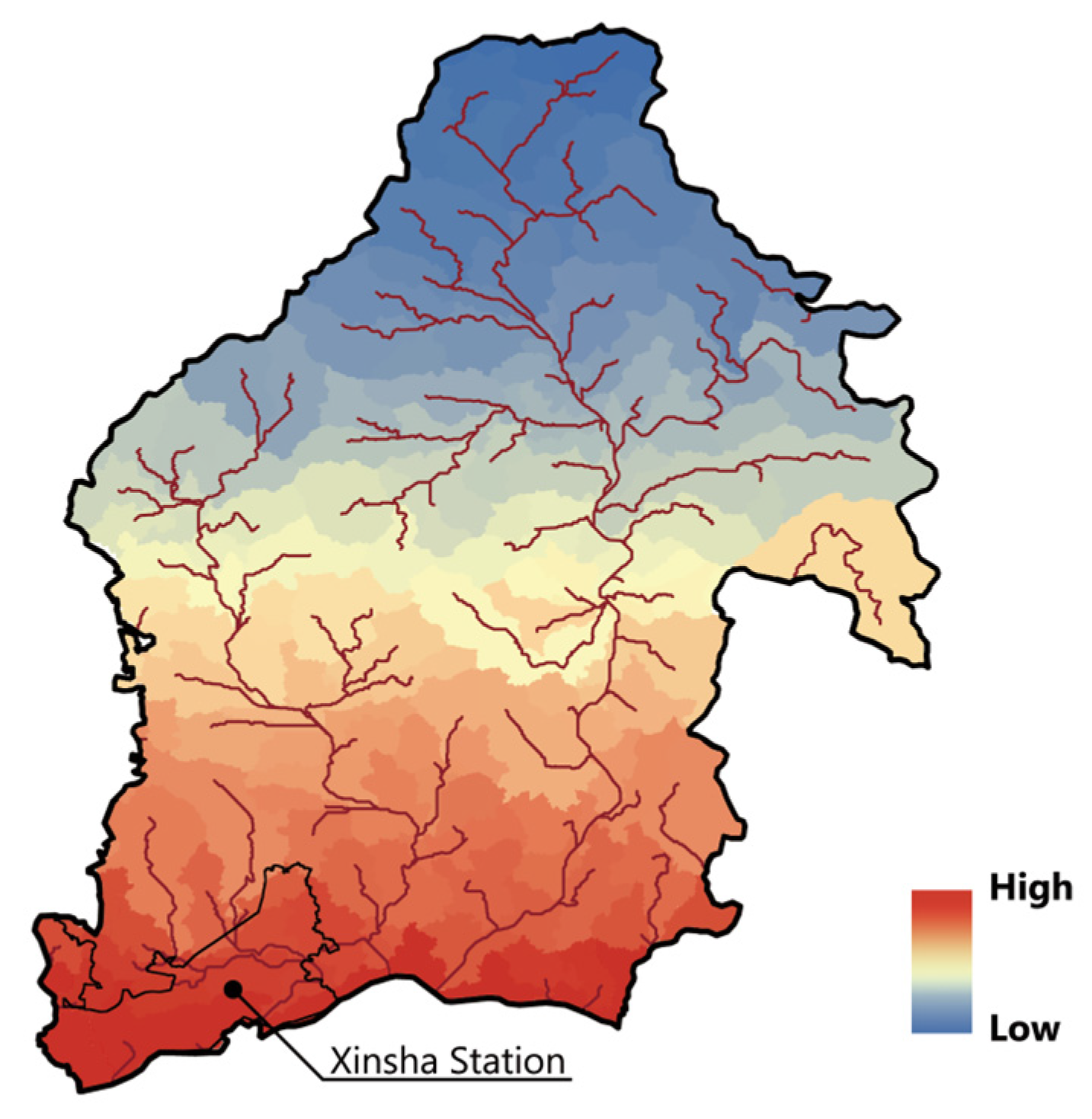
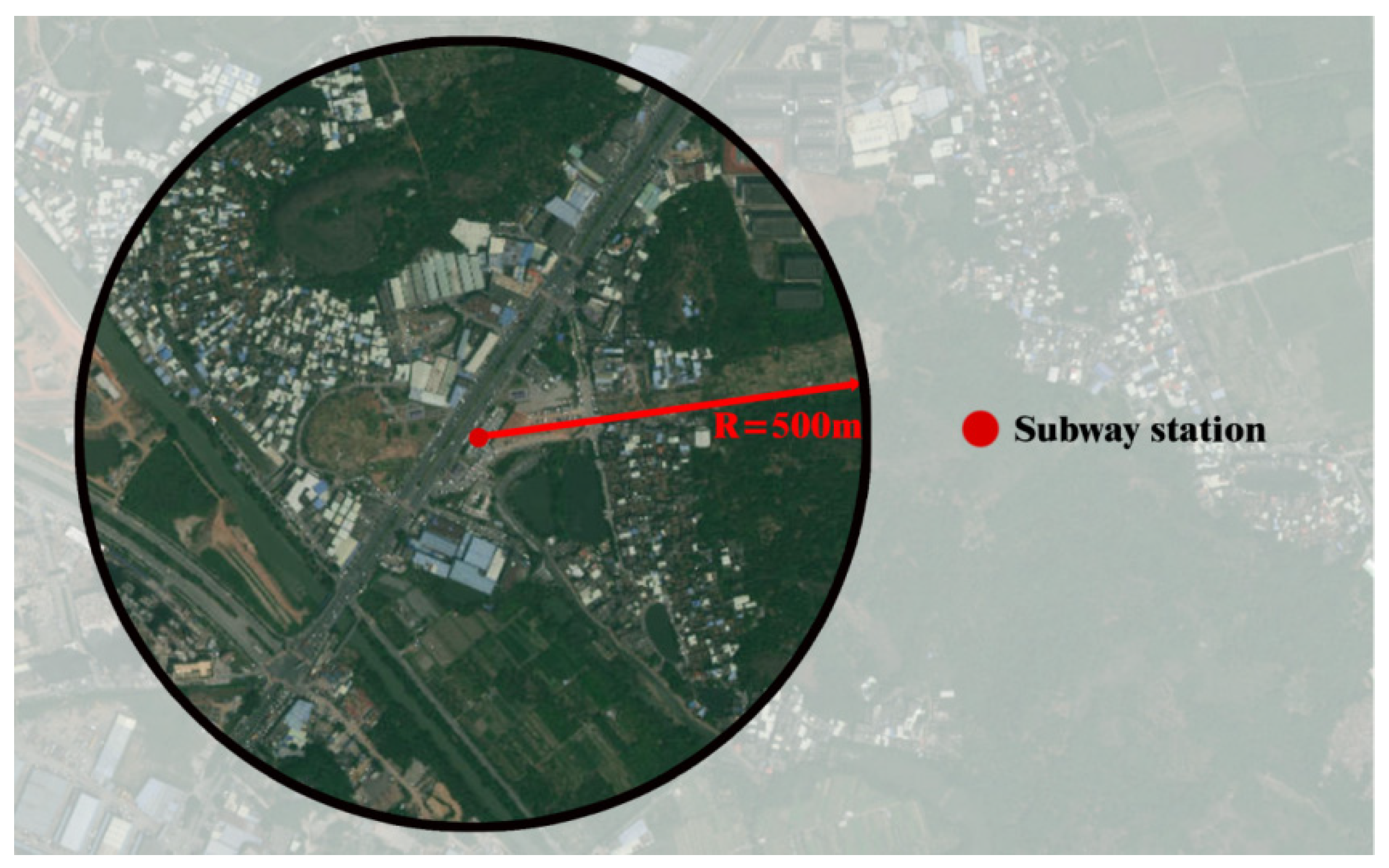
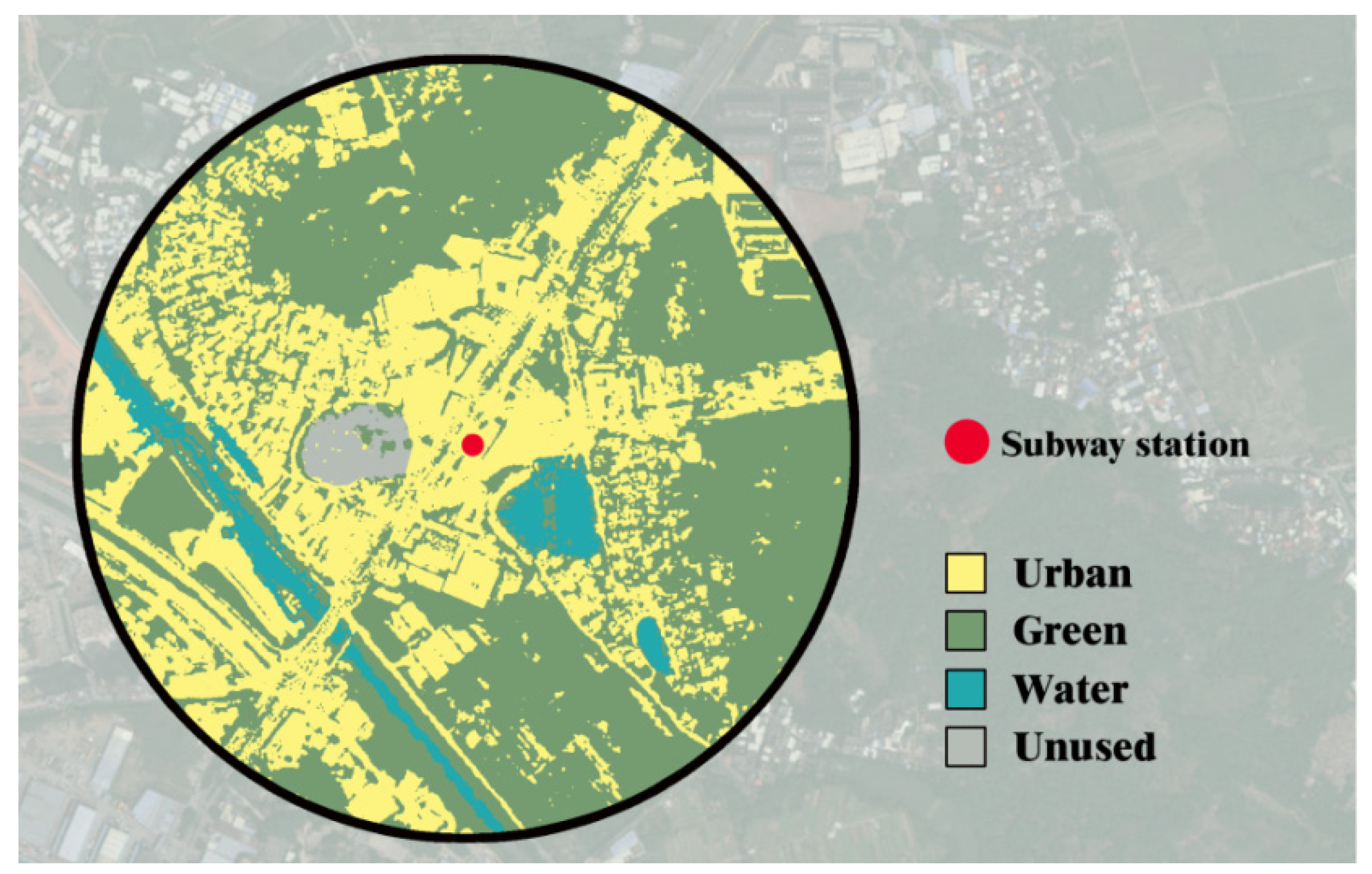
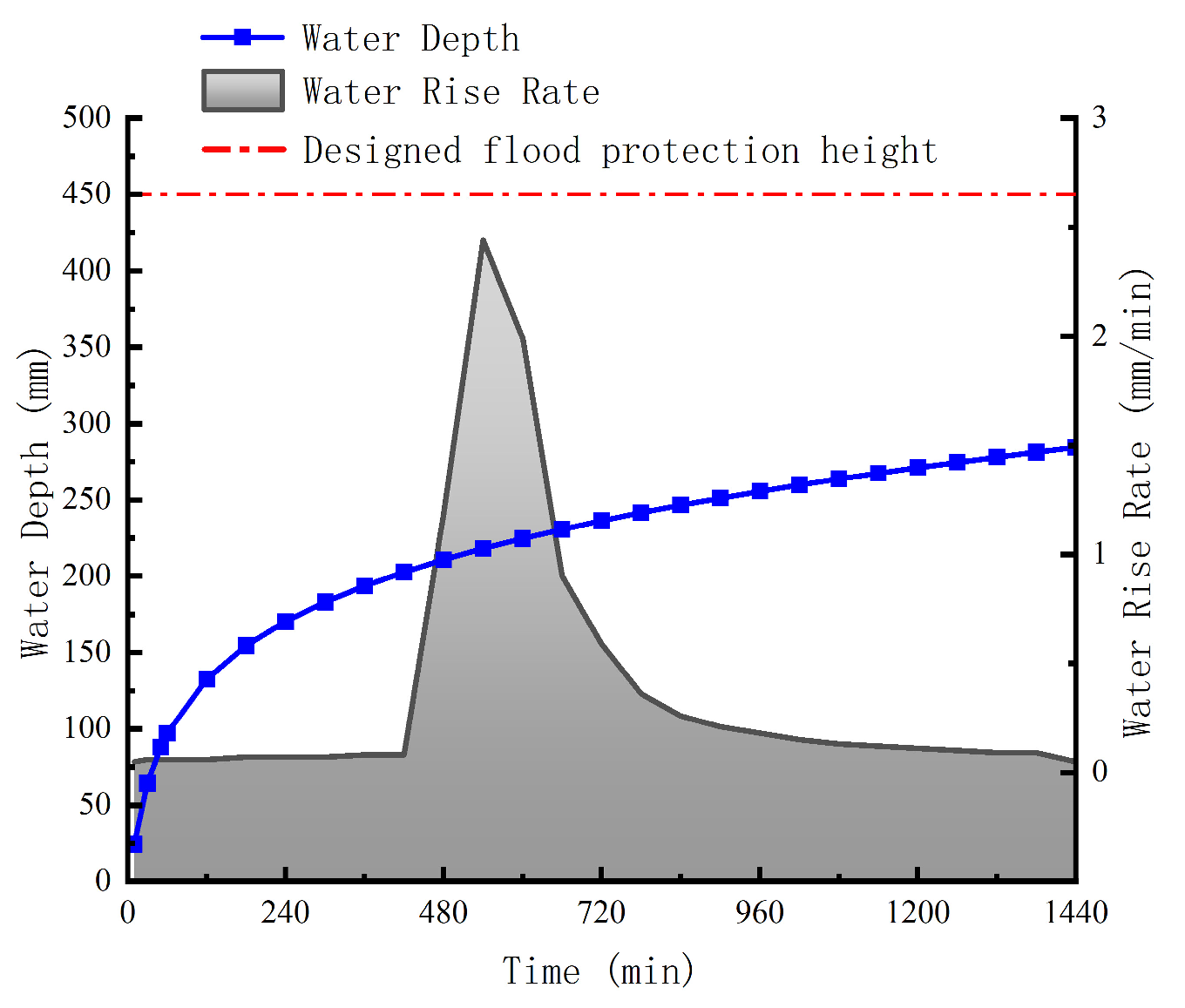
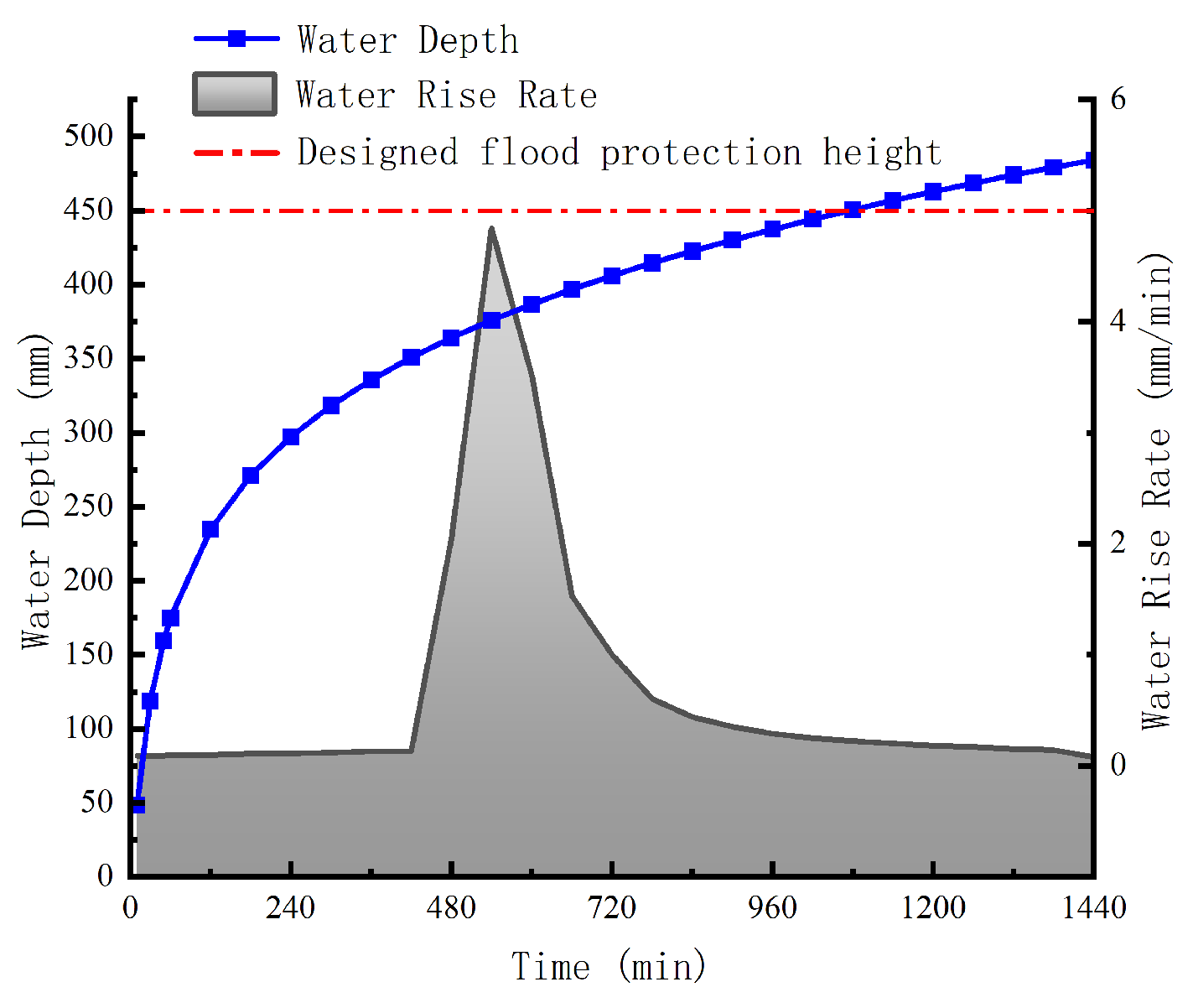
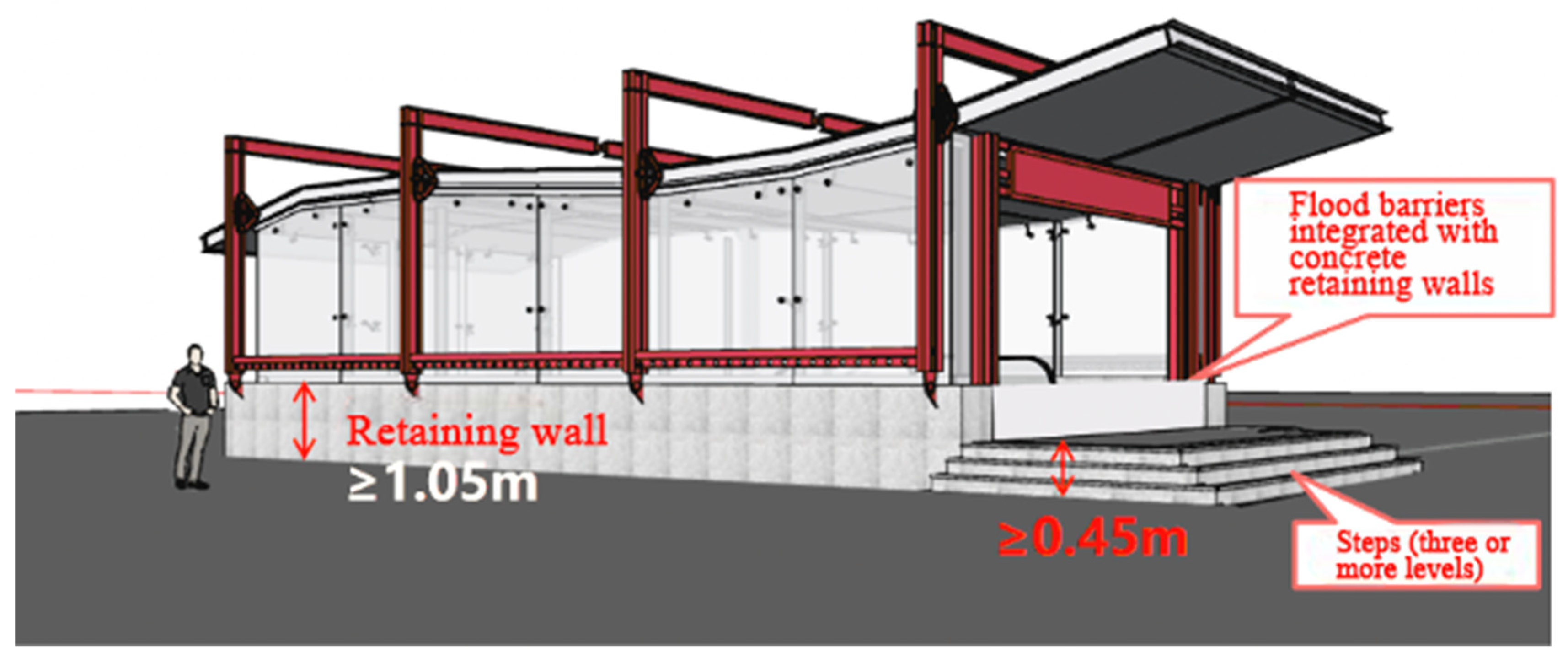
Disclaimer/Publisher’s Note: The statements, opinions and data contained in all publications are solely those of the individual author(s) and contributor(s) and not of MDPI and/or the editor(s). MDPI and/or the editor(s) disclaim responsibility for any injury to people or property resulting from any ideas, methods, instructions or products referred to in the content. |
© 2025 by the authors. Licensee MDPI, Basel, Switzerland. This article is an open access article distributed under the terms and conditions of the Creative Commons Attribution (CC BY) license (https://creativecommons.org/licenses/by/4.0/).
Share and Cite
Chen, X.; Kuai, H.; Liu, X.; Xia, B. A Flood Prevention Design for Guangzhou Metro Stations Under Extreme Rainfall Based on the SCS-CN Model. Buildings 2025, 15, 1689. https://doi.org/10.3390/buildings15101689
Chen X, Kuai H, Liu X, Xia B. A Flood Prevention Design for Guangzhou Metro Stations Under Extreme Rainfall Based on the SCS-CN Model. Buildings. 2025; 15(10):1689. https://doi.org/10.3390/buildings15101689
Chicago/Turabian StyleChen, Xin, Hongyu Kuai, Xiaoqian Liu, and Bo Xia. 2025. "A Flood Prevention Design for Guangzhou Metro Stations Under Extreme Rainfall Based on the SCS-CN Model" Buildings 15, no. 10: 1689. https://doi.org/10.3390/buildings15101689
APA StyleChen, X., Kuai, H., Liu, X., & Xia, B. (2025). A Flood Prevention Design for Guangzhou Metro Stations Under Extreme Rainfall Based on the SCS-CN Model. Buildings, 15(10), 1689. https://doi.org/10.3390/buildings15101689





